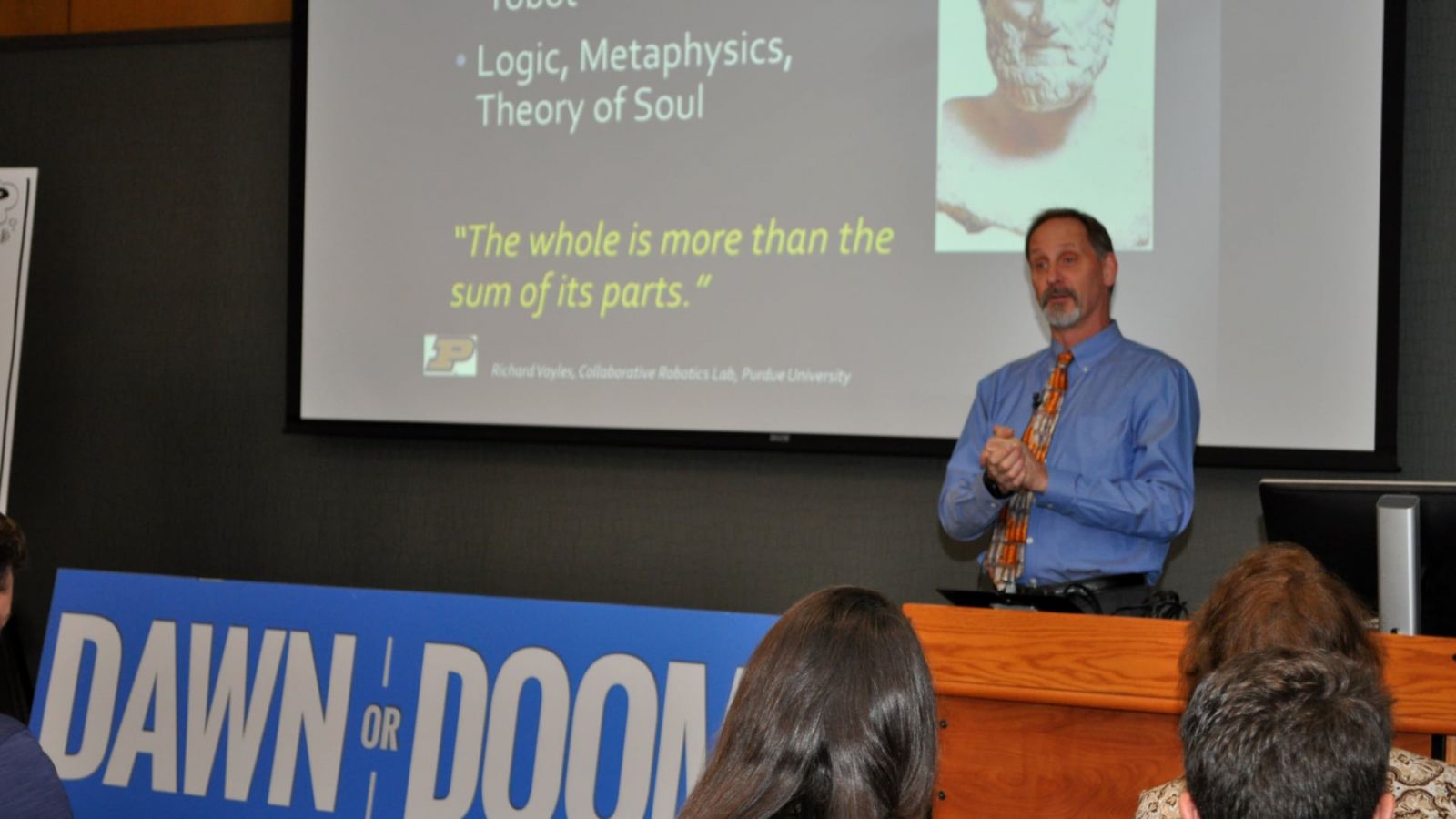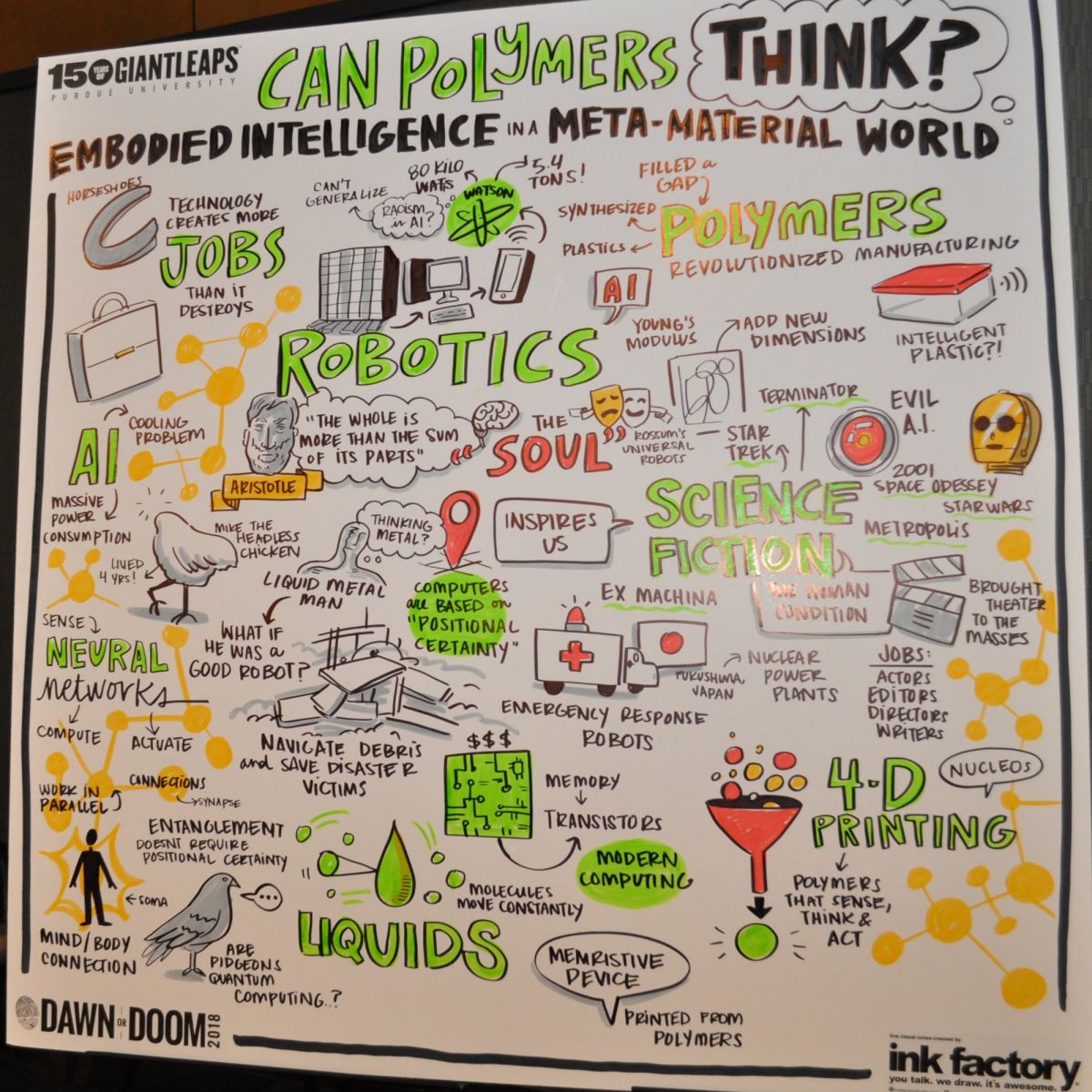
At the 2018 Dawn or Doom conference, Richard Voyles, professor of electrical and computer engineering technology and head of the Collaborative Robotics Lab, took an optimistic, or “dawn,” view of the future. During his presentation, “Can Polymers Think? Embodied Intelligence in a Meta-Material World,” Voyles mentioned the circulating opinion that robots will take people’s jobs, but offered an optimistic attitude.
“Technology has increased jobs more than it’s displaced them,” said Voyles.
As an example, Voyles pointed to the film industry. The advent of motion pictures was once feared to cause the downfall of live theater and its associated jobs. However, performance theater is alive and well, and the movie industry is thriving.
 “Movies didn’t destroy performance art,” said Voyles. “Movies added jobs like editing and special effects.”
“Movies didn’t destroy performance art,” said Voyles. “Movies added jobs like editing and special effects.”
Likewise, Voyles believes adding robotic technologies to industries such as manufacturing and transportation won’t eliminate jobs. Instead, the adoption of robotics will require an increase in the number of people in careers already associated with the technology, such as programmers, and careers in unforeseen technologies that haven’t been invented yet.
During his presentation, Voyles demonstrated one of his current projects: a miniature robot constructed of a “smart” 2D functional material folded into a 3D robot. The material reacted to a light source, which enabled the palm-sized robot to ambulate across a flat surface.
Voyles predicts robots and other smart products will soon be made of augmented polymers embedded with sensing and computation-based organic electronics.
“Brain-inspired neuromorphic computing that is embedded in the polymers will mimic human abilities. These new materials will add the functions of sensing, computing and actuating to the form. Adding programmable function throughout the 3D form,” said Voyles, “is why we call it ‘Form + Function 4D printing.’”
Video replay:
Additional information:
- Dawn or Doom
- Voyles’ robotics research inspired by nuclear power plant accident
- Creating AI to help law enforcement investigate online cyberdeviance challenged by quantity, context of language
-
Matson: Malicious use of autonomous technology threatens public safety

